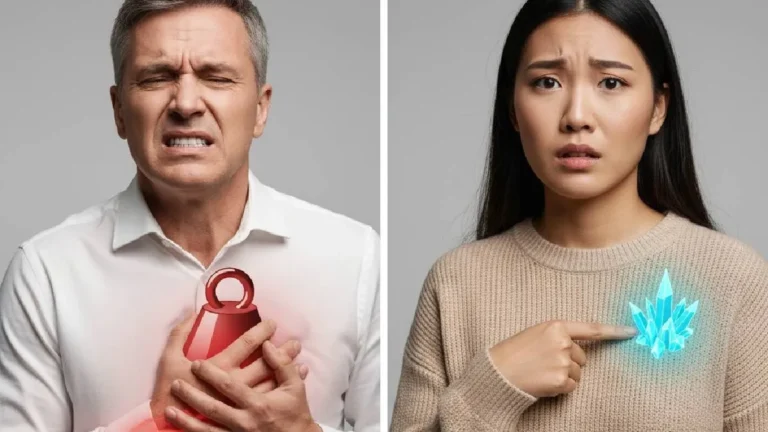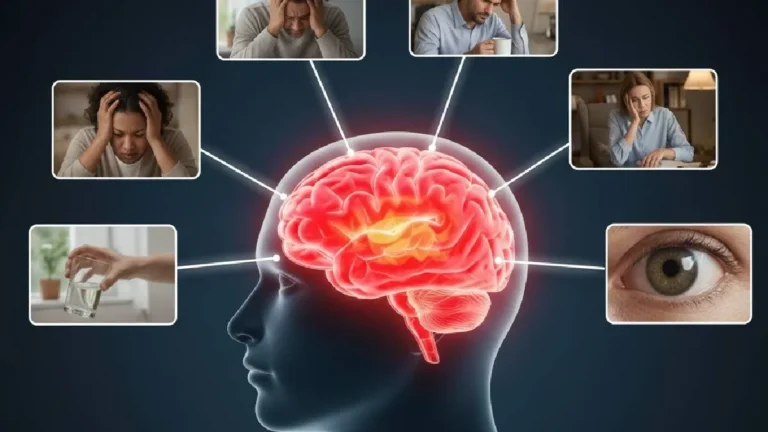Understanding HIV
HIV stands for Human Immunodeficiency Virus. It is a sexually transmitted infection (STI) that is transmitted:
- by sexual intercourse;
- through the blood;
- from mother to child (pregnancy, childbirth, breastfeeding).
HIV is a retrovirus because its genome is made of RNA. When it enters the body, it destroys CD4 T lymphocytes, which are white blood cells essential for the proper functioning of the immune system.
During the first years after infection, the immune system continues to function normally: people who are HIV -positive, i.e., carriers, therefore do not present any clinical symptoms.
It is approximately seven years after HIV infection, if no treatment is followed, that acquired immunodeficiency syndrome (AIDS) appears: the immune system no longer functions, and most of the T lymphocytes have been destroyed by the virus.
Infected people can, in the long term, develop so-called “opportunistic” diseases, including, among others, infections due to:
- bacteria (tuberculosis);
- fungi (candidiasis spreads to several organs);
- viruses (cytomegalovirus infection, for example);
- parasites (toxoplasmosis).
Immunosuppression can also be the cause of cancers (non-Hodgkin’s malignant lymphoma, Kaposi’s sarcoma, etc.).
Good to know : not all people carrying the virus (HIV) will necessarily develop the disease (AIDS).
Risk factors
Certain situations and behaviors exacerbate the transmission of HIV. These include:
- Unprotected anal or vaginal intercourse;
- The presence of another sexually transmitted infection (syphilis, herpes, chlamydia, gonorrhea, or bacterial vaginosis, for example);
- sexual behaviors involving harmful use of alcohol and drug use;
- sharing needles, syringes, or other contaminated injection equipment or solutions when injecting drugs;
- injections, risky blood transfusions, tissue grafts, medical procedures that involve cutting or piercing the skin under non-sterile conditions;
- accidental needle sticks, particularly in the medical profession.
Symptoms of HIV
HIV symptoms vary from person to person and can appear from a few weeks to several years after infection. They therefore evolve according to the stage of the disease. During the first few weeks, the infected person may be asymptomatic or develop symptoms during the primary infection phase. These symptoms are comparable to those of the flu:
- high fever;
- muscle pain;
- headaches;
- diarrhea ;
- fatigue.
After the primary infection, HIV-positive people may experience an asymptomatic phase that can last for years. Their viral load is still high, and therefore, they remain contagious. Then, as the virus weakens the immune system, other symptoms will appear:
- skin infections ( skin yeast infection , shingles , vaginal yeast infection , etc.);
- weight loss;
- cough ;
- enlargement of the lymph nodes;
- night sweats;
- fever ;
- ulcers of the mouth or genitals ;
- chronic diarrhea.
Diagnosis
Diagnosis of HIV infection is based on screening. This consists of looking for antibodies against HIV-1 and HIV-2, as well as the P24 antigen of the virus.
Screening can be carried out using:
- a blood test in a medical biology laboratory;
- a rapid diagnostic orientation test (Trod);
- An HIV self-test.
Early detection of HIV infection allows an HIV-positive person to benefit from effective treatment if it is started early. HIV blood screening tests, which are performed in a medical biology laboratory, are possible without an appointment, without a prescription, and with upfront payment.
Good to know : Receiving an HIV diagnosis can be emotionally difficult. It’s normal to feel fear, anger, or sadness. Seeking support from healthcare professionals, counselors, or support groups can help you accept and cope with this new reality.
HIV treatment
There is currently no treatment that can eliminate HIV from the body. However, certain treatments called triple therapy can:
- to block the multiplication of HIV;
- to keep an immune system functioning.
Antiretroviral therapies
Antiretroviral triple therapy takes its name from the fact that it combines, in a single dose, the actions of three inhibitors of viral multiplication.
Patients are advised to start treatment early to keep their immune system as healthy as possible while limiting the risk of transmission. Antiretroviral treatment is lifelong and must be taken every day.
According to the Pasteur Institute, antiretroviral treatment during pregnancy reduces the risk of transmission from mother to child to less than 1%, compared to 15 to 30% when there is no treatment.
Adherence to treatment
HIV treatment also requires treatment adherence. Indeed, strict adherence to treatment is crucial. Interruptions can lead to drug resistance, making the virus more difficult to treat. People living with HIV must work closely with their healthcare providers to manage their medication intake.
HIV prevention
HIV is a preventable disease. The first step in prevention is to stop the virus from spreading by:
- using condoms;
- Avoiding sharing soiled personal items: injectable equipment, clippers, etc.
- By being circumcised (for men): even if this recommendation has not yet been validated outside of certain countries with high prevalence rates, circumcision would reduce by half the risk of infection during vaginal intercourse with an infected woman.
Currently, there is no effective vaccine against HIV. People at risk of infection can take pre-exposure prophylaxis (or PrEP). This is a prescription medication to prevent HIV infection.
Highly effective if followed rigorously, PrEP reduces the risk of contracting HIV during sexual intercourse by around 99%, and the risk of contracting it through sharing syringes by at least 74%.
In the event of a risk, post-exposure antiretroviral treatment is possible and must be started as soon as possible and within 48 hours. It can be prescribed in the emergency room or in certain Cegidd (health centers) when the patient’s eligibility criteria are met. Strictly following post-exposure antiretroviral treatment, after risky behavior, makes the virus undetectable in the blood, which considerably reduces the risk of transmission.
Living with HIV daily
Living with HIV comes with its challenges, but that doesn’t mean those infected can’t live full and happy lives. There is no cure for HIV infection. However, thanks to significant advances in antiretroviral therapy, it is possible to live a long and healthy life with HIV.
These treatments reduce the amount of virus in the blood to an undetectable level, which prevents the transmission of HIV to others and protects the immune system from damage caused by the virus.
Healthy lifestyle
- Eat well and exercise: Maintaining a balanced diet and exercising regularly are essential for staying healthy. Good nutrition strengthens the immune system, while exercise improves cardiovascular health and reduces stress.
- Take antiretroviral drugs as prescribed;
- Visit the doctor regularly for checkups and advice.
- Manage stress.
- Have a good support system.
Mental health and emotional support
Mental health is just as important as physical health. Stress, anxiety, and depression are common among people living with HIV. The stigma and discrimination that HIV-positive people often face can affect their mental health, leading to:
- emotional difficulties;
- lack of self-esteem;
- fear of rejection;
- etc.
Accepting one’s HIV status is facilitated by the presence, kindness, and support of loved ones, and this allows infected people to live better with HIV. It is therefore important for these people to discuss their HIV status with people they trust.
To make the announcement, they can be accompanied by experienced professionals and by associations of people living with HIV.























+ There are no comments
Add yours